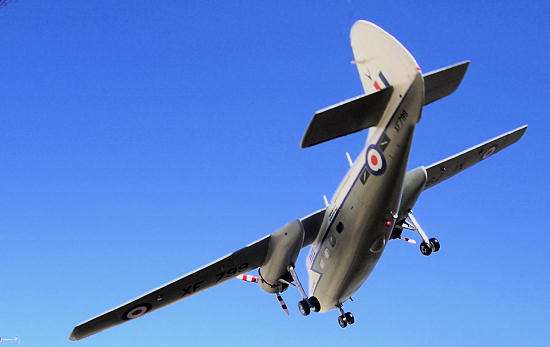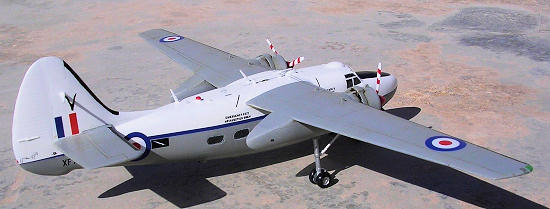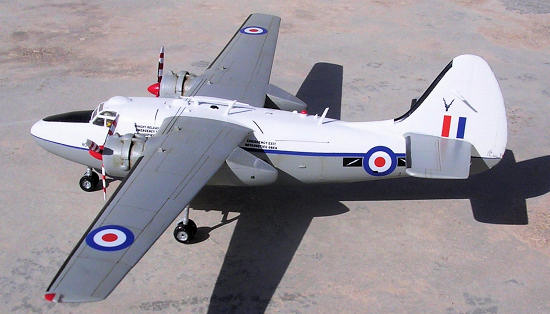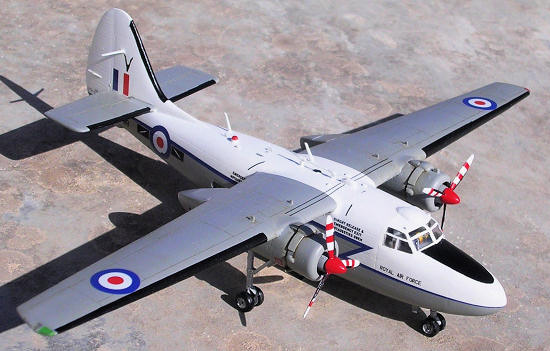
Special Hobby 1/72 Pembroke C.1
| KIT #: | 72105 |
| PRICE: |
27
Euro from K hobbies, il-Fgura, |
| DECALS: | Three options |
| REVIEWER: | Carmel J. Attard |
| NOTES: | Includes photo etch parts |

| HISTORY |
The Pembroke C Mk1
released by Special Hobby comes under the title of
“Cold War Spy Plane” and it is worthwhile relate how a
communication aircraft came to perform such missions as best explained in the
kit instructions.
 Malaya
Malaya
Until recently,
another true function of the Pembroke was known only to a very few in the
military. These were used in one of the most sensitive intelligence missions
flown by the RAF during the Cold War, known as Operation Hallmark. In this role
the Pembroke was fitted with high-powered reconnaissance cameras and they
photographed Soviet and East German military installations and airfields
underneath the tightly controlled corridors.
 The air
photographs were then analysed by imagery experts, who recorded any changes of
the powerful
The air
photographs were then analysed by imagery experts, who recorded any changes of
the powerful
Changes to Order of Battle; introduction of new equipment and units moving out
of barracks were all items of interest to be reported. It was imagery from the
Pembrokes that gave the Western analysts some of the first indications as to
where the Soviet forces that invaded
Besides the RAF Pembrokes were also in service with the Air Forces of
| THE KIT |
 The
kit is nicely moulded in medium grey plastic, a medium sized model with finely
engraved panel lines. Being a short run kit there are no locating pins and the
sprues in-gates are somewhat thick. There is full interior detailing with neatly
moulded passenger seats and detailed cockpit. The transparencies are absolutely
crystal clear and so well fitting especially the side windows, which had a
slight taper towards the outside so that they if so desired can be fitted at a
final stage after paintwork on the fuselage. I did not go for the sequence and
preferred to fit the window clear parts before I closed the fuselage.
The
kit is nicely moulded in medium grey plastic, a medium sized model with finely
engraved panel lines. Being a short run kit there are no locating pins and the
sprues in-gates are somewhat thick. There is full interior detailing with neatly
moulded passenger seats and detailed cockpit. The transparencies are absolutely
crystal clear and so well fitting especially the side windows, which had a
slight taper towards the outside so that they if so desired can be fitted at a
final stage after paintwork on the fuselage. I did not go for the sequence and
preferred to fit the window clear parts before I closed the fuselage.
The kit has
optional parts so that a short span Prince can be made and the wing extension
was all that was needed to make the Pembroke. The decals offer three options,
two being 60 Squadron RAF with different serial number and one having squadron
bars around the roundel. These are light grey with white top. Another option is
for a Pembroke also in white top but the rest is silver and it carries the
| CONSTRUCTION |
 In
the absence of locating pins I fixed plastic stabs about 1 cm long fixed at
intermittent spacing along he fuselage joining line to the two sides at
alternate position. This method I found works perfect on vac form kits and
equally well on short run kits. The interior was painted light grey with seat
cushions in brown together with tan seat straps. There was no scope of adding
more detail to the passenger area as it will be lost when the fuselage is
closed. As this is a tricycle undercarriage type this needed lead weight add to
nose compartment. The added weight was kept secure by adding blanking bulkhead
made out of plastic card. In case one misses adding weight a prop is provided so
that it is fitted to the fuselage aft. One comment when it comes to the wing
extensions, which had a slightly thicker section on the outer wing parts so that
the step produced, needed to file down to bring an even continuity of wing
suction side. Separate transparencies form the wing tip lights. A little amount
of filler was all that was needed to the wing root joints and engine nacelles to
wing joints. Small aerials and antennae as well as windscreen wipers were all
fitted at this stage.
In
the absence of locating pins I fixed plastic stabs about 1 cm long fixed at
intermittent spacing along he fuselage joining line to the two sides at
alternate position. This method I found works perfect on vac form kits and
equally well on short run kits. The interior was painted light grey with seat
cushions in brown together with tan seat straps. There was no scope of adding
more detail to the passenger area as it will be lost when the fuselage is
closed. As this is a tricycle undercarriage type this needed lead weight add to
nose compartment. The added weight was kept secure by adding blanking bulkhead
made out of plastic card. In case one misses adding weight a prop is provided so
that it is fitted to the fuselage aft. One comment when it comes to the wing
extensions, which had a slightly thicker section on the outer wing parts so that
the step produced, needed to file down to bring an even continuity of wing
suction side. Separate transparencies form the wing tip lights. A little amount
of filler was all that was needed to the wing root joints and engine nacelles to
wing joints. Small aerials and antennae as well as windscreen wipers were all
fitted at this stage.
| COLORS & MARKINGS |
| CONCLUSIONS |

September 2010
If you would like your product reviewed fairly and quickly, please contact me or see other details in the Note to Contributors.